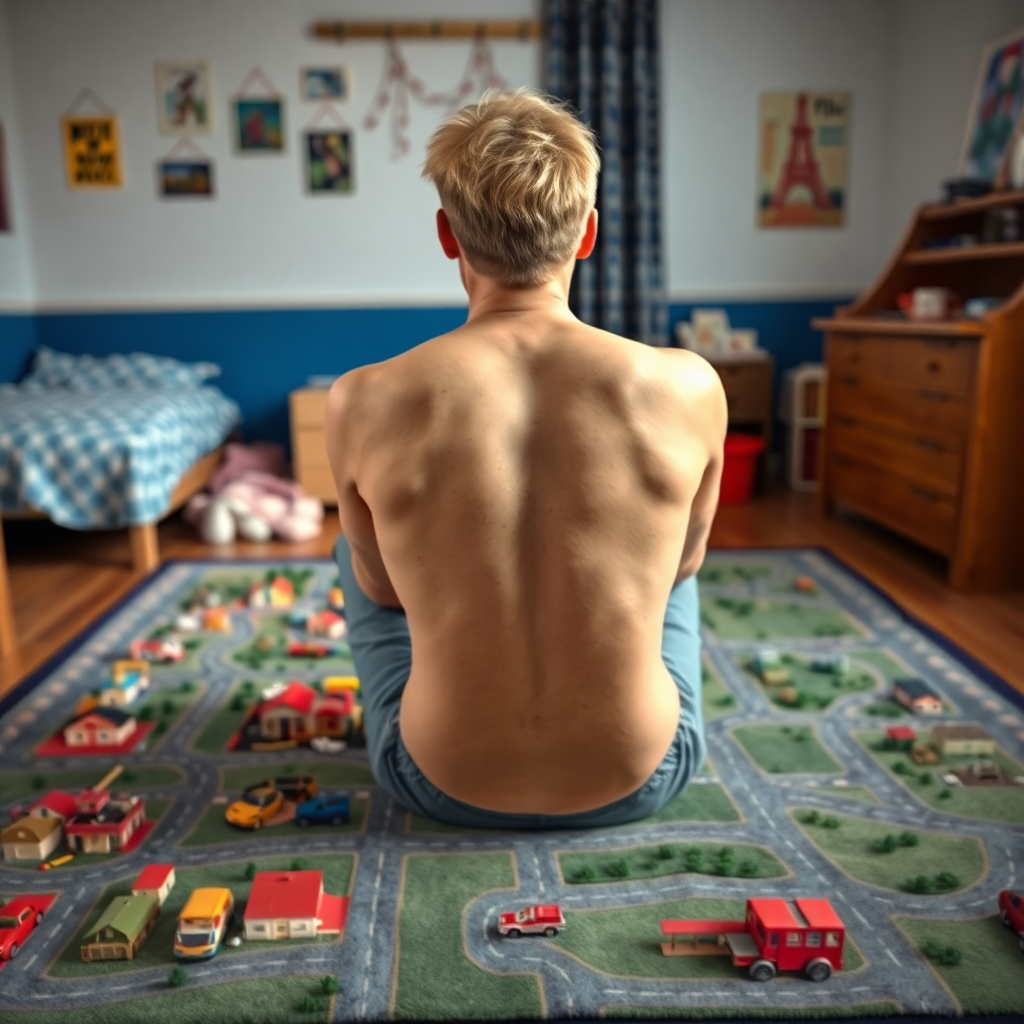Zane's Essay on Why Mitchell Should Have a Race Car Rug
By Zane, College Freshman
To whom it may concern,
As a freshman studying Developmental Psychology at State University, I’d like to offer my perspective on why acquiring a race car rug with a town layout would be beneficial for Mitchell’s unique developmental situation. While I’m still early in my academic journey, the case of Mitchell—who experiences the cognitive development of a two-year-old within an adult physiology—presents a fascinating intersection of developmental theory and practical accommodation.
From a theoretical standpoint, Mitchell’s cognitive age aligns with what Piaget termed the preoperational stage of development. During this critical period, symbolic play becomes essential for cognitive development. A race car rug with a town layout provides precisely the kind of symbolic play environment that Mitchell’s developing mind requires. The miniature representation of a town allows him to engage with concepts of space, place, and social roles in a manner appropriate to his cognitive development, despite his adult physical appearance.
My developmental psychology professor, Dr. Harrison, emphasized in last week’s lecture that age-appropriate play materials are crucial regardless of physical age. The disconnect between Mitchell’s physical and cognitive development doesn’t negate his need for developmentally appropriate play experiences.
The race car rug offers significant benefits for Mitchell’s spatial cognition development. My roommate Jake, who’s majoring in Cognitive Science, explained how navigating miniature environments helps develop neural pathways associated with spatial reasoning. When Mitchell maneuvers toy vehicles through the streets of the rug town, he’s actually building mental maps and developing an understanding of spatial relationships.
This kind of play activity engages what neuroscientists call the hippocampal mapping system—essentially teaching the brain to understand relationships between objects in space. My TA, Mr. Thompson, explained that these skills form the foundation for later mathematical reasoning and problem-solving abilities.
Another compelling reason for the race car rug relates to what sociologists call “script theory.” The town layout provides Mitchell with a concrete representation of social scripts—the routines and sequences that make up daily life. By moving vehicles to different locations like the grocery store, school, or hospital, Mitchell can rehearse and internalize these social scripts.
My fraternity brother Chris works part-time at the university’s child development center, and he’s observed how children use miniature towns to practice their understanding of community roles and responsibilities. For Mitchell, this kind of play could help bridge the gap between his cognitive age and the adult social world he must navigate.
Beyond the developmental benefits, there’s significant therapeutic value in providing Mitchell with play materials that acknowledge and respect his cognitive reality. My psychology textbook, authored by Dr. Richard Bennett, discusses how cognitive dissonance can occur when there’s a mismatch between environmental expectations and cognitive capabilities.
The race car rug represents an acknowledgment of Mitchell’s actual developmental needs rather than imposing expectations based solely on his physical appearance. This alignment between environment and cognitive reality can reduce frustration and anxiety, promoting psychological well-being.
From a practical standpoint, the race car rug offers several advantages. Unlike many toys designed for toddlers, a floor rug doesn’t immediately read as infantilizing to outside observers. It’s a room accessory that can serve both Mitchell’s developmental needs and maintain a degree of age-appropriate décor.
Additionally, the rug provides a designated play space that can help Mitchell understand boundaries—both physical and conceptual. My cousin’s son, who has autism, benefited greatly from having a clearly defined play area that helped him understand when and where certain behaviors were appropriate.
While I acknowledge that I’m still early in my academic career, the case for providing Mitchell with a race car rug with a town layout seems supported by fundamental principles of developmental psychology. The rug offers cognitive, spatial, and social benefits that align with Mitchell’s actual developmental needs while maintaining a degree of dignity and practicality.
I believe that accommodating Mitchell’s cognitive reality through appropriate environmental modifications represents the most ethical and beneficial approach to his unique situation. The race car rug is not merely a toy but rather an important developmental tool that respects who Mitchell truly is.
Respectfully submitted,
Zane
Freshman, State University
Department of Psychology

